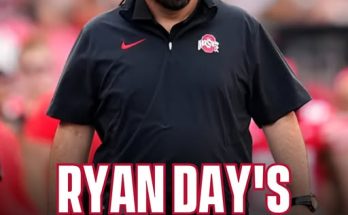On August 9, 1988, the hockey world experienced a moment that would forever change the sport, its culture, and its future trajectory. Wayne Gretzky, widely regarded as the greatest player to ever lace up skates, was traded from the Edmonton Oilers to the Los Angeles Kings in a blockbuster deal that shocked fans, players, and the entire hockey community. This event was more than a mere trade; it was a seismic shift in the landscape of professional sports, a move that transcended hockey and resonated on cultural and national levels. Gretzky was not just a superstar athlete—he was a symbol of Canadian pride, a living legend who had dominated the 1980s and elevated the game to unprecedented heights. His departure from Edmonton, where he had built a dynasty with four Stanley Cups in five years, felt like the end of an era and the beginning of a new, uncertain chapter for the sport.
To understand the gravity of this trade, one must consider what Gretzky represented in Edmonton and across Canada. Born in Brantford, Ontario, Gretzky’s rise from a hockey prodigy to an NHL icon captured the imagination of an entire country. His record-breaking career with the Oilers was nothing short of extraordinary. By 1988, he had already rewritten the record books, amassing points and assists at a rate that defied belief. He was not just the face of the Oilers but the face of hockey itself, embodying the skill, finesse, and intelligence that defined the sport. Edmonton, a small-market Canadian city, had been transformed by Gretzky’s presence. With him leading the way, the Oilers became one of the most dominant teams in NHL history, winning Stanley Cups in 1984, 1985, 1987, and 1988. His departure was unthinkable to fans who had come to see him as part of the city’s identity.
The trade that sent Gretzky to the Los Angeles Kings was monumental not only because of the caliber of the player involved but also because of the broader implications it carried. The deal included Gretzky, along with teammates Marty McSorley and Mike Krushelnyski, being shipped to Los Angeles in exchange for young star Jimmy Carson, forward Martin Gélinas, three first-round draft picks, and a staggering \$15 million in cash. It was a blockbuster transaction that blended hockey with high-stakes business. To many Canadians, the inclusion of such a large cash component felt like the Oilers’ ownership had sold not just a player but a piece of the country’s soul. Peter Pocklington, the Oilers’ owner, became a lightning rod for criticism, with angry fans accusing him of valuing money over the loyalty and legacy of the team’s greatest player.
Behind the scenes, the motivations for the trade were complex and layered. Gretzky himself admitted in later years that he had begun to think about life beyond Edmonton. His father, Walter Gretzky, revealed that Wayne had considered leaving even before the team’s 1988 Stanley Cup victory. Adding fuel to the public narrative was Gretzky’s marriage to actress Janet Jones, who lived in Los Angeles. Some speculated that his personal life had influenced the move, suggesting that Hollywood glamour was pulling him away from Edmonton’s tight-knit community. However, this interpretation has often been exaggerated. The more pressing factor was Pocklington’s financial situation. Facing significant business challenges, the Oilers’ owner viewed Gretzky as an asset whose trade could inject much-needed cash into his enterprises. The \$15 million component of the trade was not just a number—it was a lifeline for Pocklington’s struggling business interests.
The emotional toll of the trade was perhaps most evident during Gretzky’s farewell press conference. Standing alongside Pocklington, Gretzky broke down in tears, struggling to find the words to express his heartbreak. For fans, seeing the usually composed and graceful “Great One” overwhelmed with emotion was gut-wrenching. It was a rare glimpse into the personal side of professional sports, where decisions made in boardrooms can have profound effects on the lives of players and fans alike. In Edmonton, the reaction was swift and fierce. Many fans protested the trade, some going as far as burning effigies of Pocklington. Across Canada, the trade was seen as a betrayal, a moment when the business of hockey seemed to overshadow its cultural significance. Gretzky was more than just a player; he was a national treasure, and his departure felt like an affront to the country’s pride.
While the immediate reaction in Canada was one of anger and sorrow, the trade had a radically different impact in the United States, particularly in Los Angeles. The arrival of Wayne Gretzky in a non-traditional hockey market was nothing short of transformative. Suddenly, the Los Angeles Kings, a team that had long struggled for relevance in a city dominated by baseball, basketball, and Hollywood, became the hottest ticket in town. Attendance surged, media coverage expanded, and hockey began to carve out a space in the American sports landscape in ways that had never been seen before. Gretzky’s star power transcended the sport. He was not just an athlete but a celebrity, and his presence in Los Angeles helped bring the NHL into the mainstream American consciousness.
The ripple effects of Gretzky’s move extended far beyond Los Angeles. His success with the Kings helped fuel the NHL’s expansion into non-traditional markets throughout the 1990s. Teams in San Jose, Anaheim, Dallas, and Phoenix all owe part of their existence and popularity to the groundwork laid by Gretzky’s arrival in California. Youth hockey programs in these regions began to flourish as more children were exposed to the sport, inspired by the presence of the “Great One” in their backyard. In many ways, Gretzky’s trade to the Kings was a catalyst for the growth of hockey in the United States, expanding its footprint and introducing the game to new audiences.
Though the Kings never captured a Stanley Cup during Gretzky’s tenure, his impact on the franchise was profound. In 1993, he led the team to its first-ever Stanley Cup Final, an achievement that galvanized the fan base and proved that hockey could thrive in markets that lacked the traditional frozen ponds of Canada and the northern United States. Gretzky’s ability to elevate the play of those around him and his unmatched vision on the ice made the Kings a legitimate contender and a team that demanded respect. Even without a championship, his time in Los Angeles was a success in every sense of the word, as it demonstrated that hockey could be both a sport and a spectacle in a city known for its entertainment industry.
Looking back, the Gretzky trade is remembered as one of the most pivotal moments in sports history. It symbolized the tension between tradition and commercialization, between the deep-rooted love of the game in Canada and the expanding business ambitions of the NHL. For Canada, the trade was painful. It marked the end of an era for the Edmonton Oilers, who, despite winning another Stanley Cup in 1990, would never again reach the heights of their Gretzky-led dynasty. For the United States, however, the trade opened doors that had previously been unimaginable. It helped plant the seeds for the NHL’s modern era, where markets like Las Vegas, Florida, and Nashville are now integral parts of the league.
Wayne Gretzky’s personal journey was also reshaped by the trade. While he continued to rack up points and solidify his status as the NHL’s all-time leading scorer, he also became an ambassador for the sport, using his platform to promote hockey in places where it had never been considered part of the cultural fabric. His time in Los Angeles showcased his ability to adapt and thrive under different circumstances, proving that his greatness was not tied to a single team or market.
In the end, the Gretzky trade of 1988 was far more than a sports transaction. It was a cultural event that highlighted the intersection of sports, business, and national identity. It hurt Edmonton and Canada deeply, but it also helped the NHL evolve into a more global and commercially viable league. For better or worse, hockey was never the same after that day. Wayne Gretzky’s tears at the press conference spoke volumes, capturing the heartbreak, confusion, and hope that accompanied the trade. More than three decades later, the shock and significance of that moment still resonate. The day Wayne Gretzky left Edmonton for Los Angeles will forever be remembered as the day hockey changed forever, a day when one man’s journey altered the trajectory of an entire sport.



